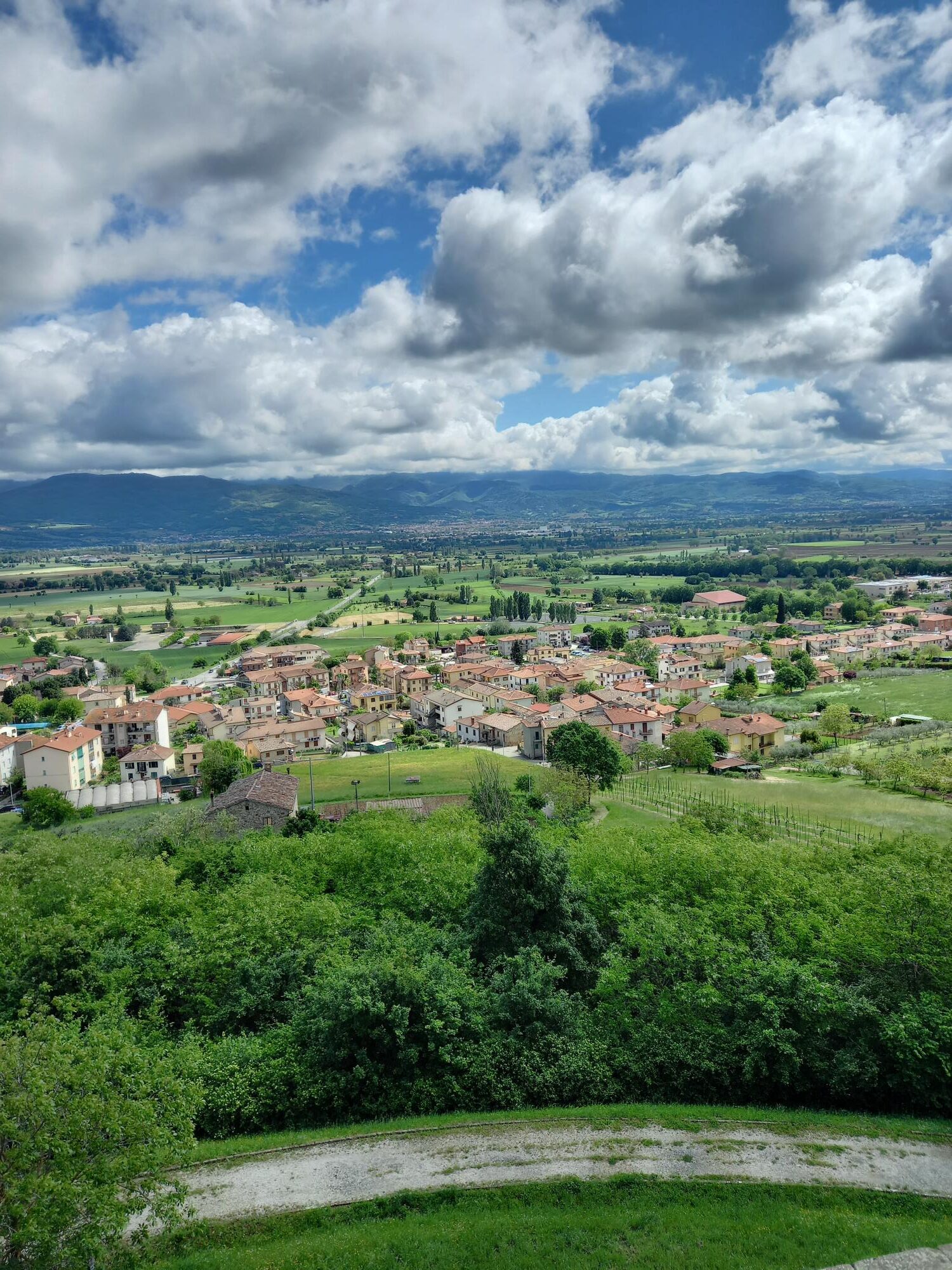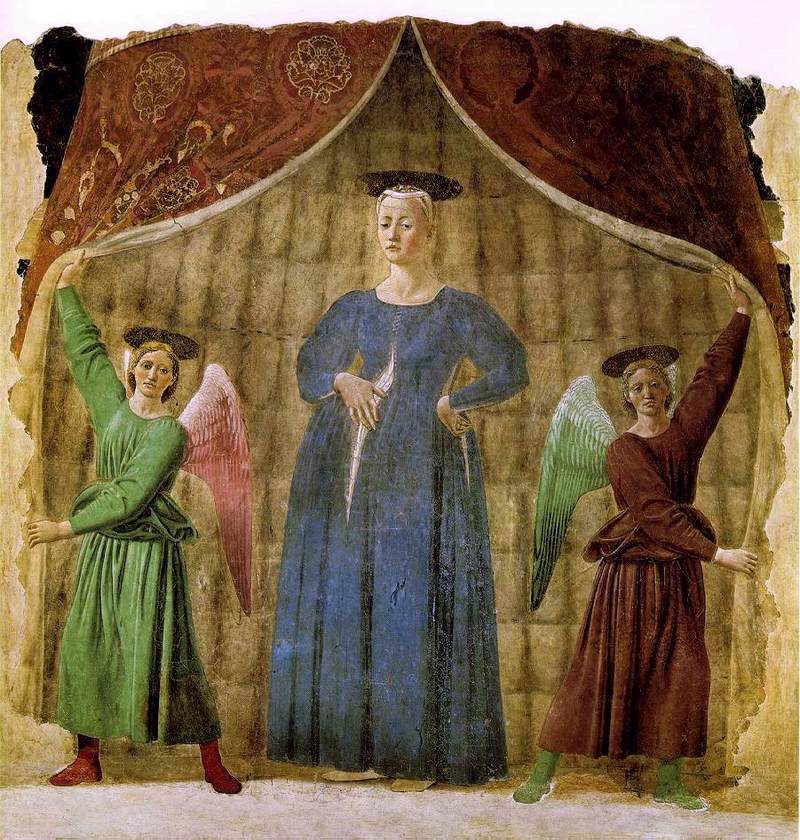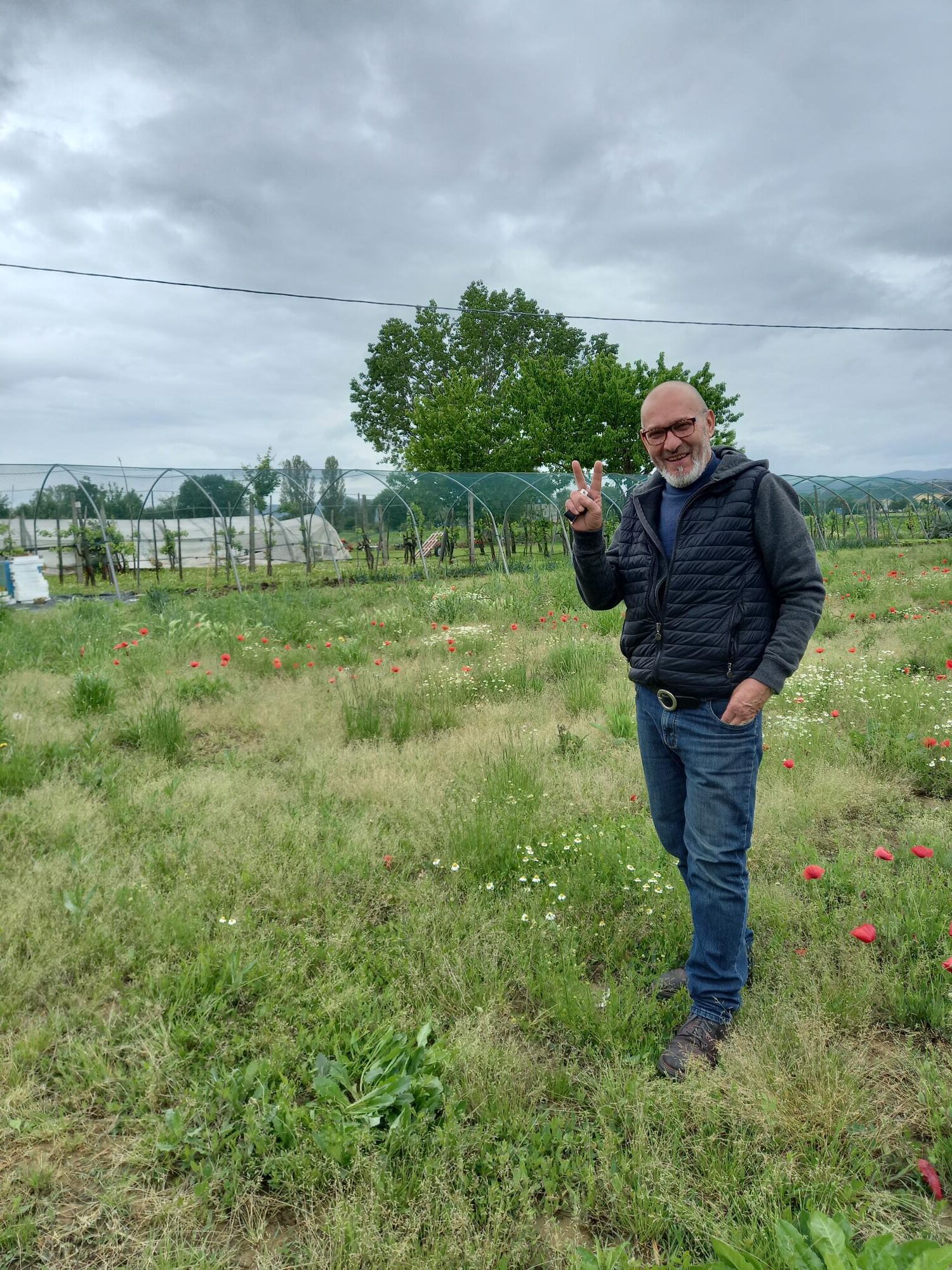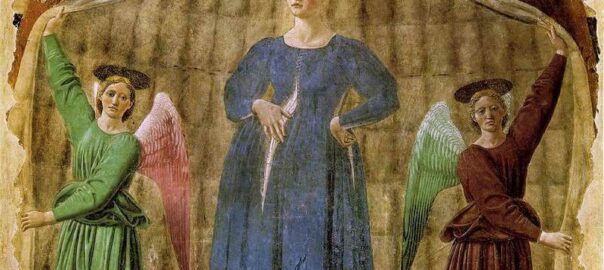When, in 2018, I interviewed Paola, the wise street cleaner in Anghiari (Part 1,Part 2), she said ‘when I clean at La Croce in the morning and I look towards the valley, that valley that Leonardo and Piero della Francesca also looked at, it is a great joy. . I’ve recalled these words as I look with wonder at the view from the apartment where I am staying. It is quite simply breath-taking – the light, the colours, the Apennines around and beyond. But it is the cultural and historical richness in this view that particularly holds my attention. As Paola suggests, alongside all the visible historical changes, you can still imagine those renaissance artists in this landscape. (It has been a great joy to reconnect with Paola, who is very happy to do an interview with me on life in Anghiari during covid.)

With respect to changes, I’ll start with the river. The place I am staying in has been called ‘Tiber view’, but, in fact, you cannot see the Tiber from here. With the construction of a dam a little north of here in the post-war period, the river was reduced to a shallow trickle. Completed in the ’80s, this construction involved the flooding of homes, churches, and all the attendant downstream problems that go with damming, including the loss of a variety of species of fish. I understand that, over the centuries, the course of the river has changed, and that, in the past, not only did it flow fuller and deeper, but, at one stage, came quite close to Anghiari.
When I look at this view, it is the famous Battle of Anghiari (1440), and the ‘lost painting’ of Leonardo Da Vinci, that first comes to mind. The site of this battle is directly in front of the walls, about halfway across the valley. It is marked on the straight road that runs from the top of the hill in Anghiari to Sansepolcro, at a place that is, in fact, called Mezzavia (halfway).
This road is itself a significant reference point in the landscape, cutting the valley in two with a constant stream of traffic. It is not, as is sometimes mistakenly thought, a Roman road. Rather, it was built in the 14th century to connect two key Francescan sites – the church of La Croce and the hermitage of Montecasale. I have a direct line of sight to this monastery, nestled high on a ridge in the mountains above Sansepolcro. Throughout these mountains and hills and across the valley, there is a web of paths walked by Francescan monks in the past and, today, retraced by pilgrims.

Sansepolcro, which I can see in the distance, is the hometown of Piero della Francesca. It is surrounded by shopping centres and industrial sites which stretch down the valley towards Città di Castello. And at the bottom of the hill here, in Anghiari, there is the sort of modern development of housing and shops that you find outside every town in Italy. Amidst these, is the 13th century church, Santo Stefano. There are also orti (kitchen gardens) right here below the walls, and small farms that, along with vegetables, have fruit trees, olives, vines, beehives, chooks and geese. I watch the noisy geese waddling amongst the vines. And people walking their dogs along the path that runs around the base of the walls. At a little distance, there is the main Anghiari cemetery. And, all across the valley, there is a patchwork of small-scale agriculture, with old farmhouses scattered about, and, towards the north, cyprus-lined dirt roads weaving through the fields, up into the wooded foothills of the Apennines. Looking south, I can see Monterchi, the hilltop town that houses Piero della Francesca’s Madonna del Parto.
This view, then, holds a juxtaposition of a continuous monastic life, renaissance history and art, modern industry and housing, traditional and modern practices of food production. In a way, it is an everyday sort of view, and, on reflection, I wonder if it might not be the presence of the sacred and the profane, the modern and the ancient, the beautiful and the ugly that makes it an endlessly interesting and beautiful view.
PS I have just returned from a trip into the valley with a dear friend, Armando, who took me to a place, near Mezzavia, where they sell their own organic vegetables. Without him, I would never have found this unassuming place, full of freshly picked spring vegetables. Of course, with respect to my last post, one needs a car to get there!

It had been pouring with rain all day, but stopped while we were out. Here is Armando in the field of wild poppies and chamomile next to a bed of artichokes. On arrival home, he has just told me that the place in which I’m staying was, in the 17th century, a synagogue.

That’s a wonderful overview, Ann. 😊
Thanks for the wonderful tour Ann. Lovely to ‘be there’. Brava.
You write so beautifully, I feel like I am there with you and certainly wish I was!
There is no doubt when in Europe you feel the energy of those who for centuries have been before you … in the cobbled streets, ancient walls and villages. Their presence and guidance is magical. I am intrigued by the mix in the gardens wild poppies, chamomile and artichokes (sounds like a healing soup!).
thank you to everyone for your encouraging comments.
Brava Ann! Molto interessante e pieno di poesia! love v.